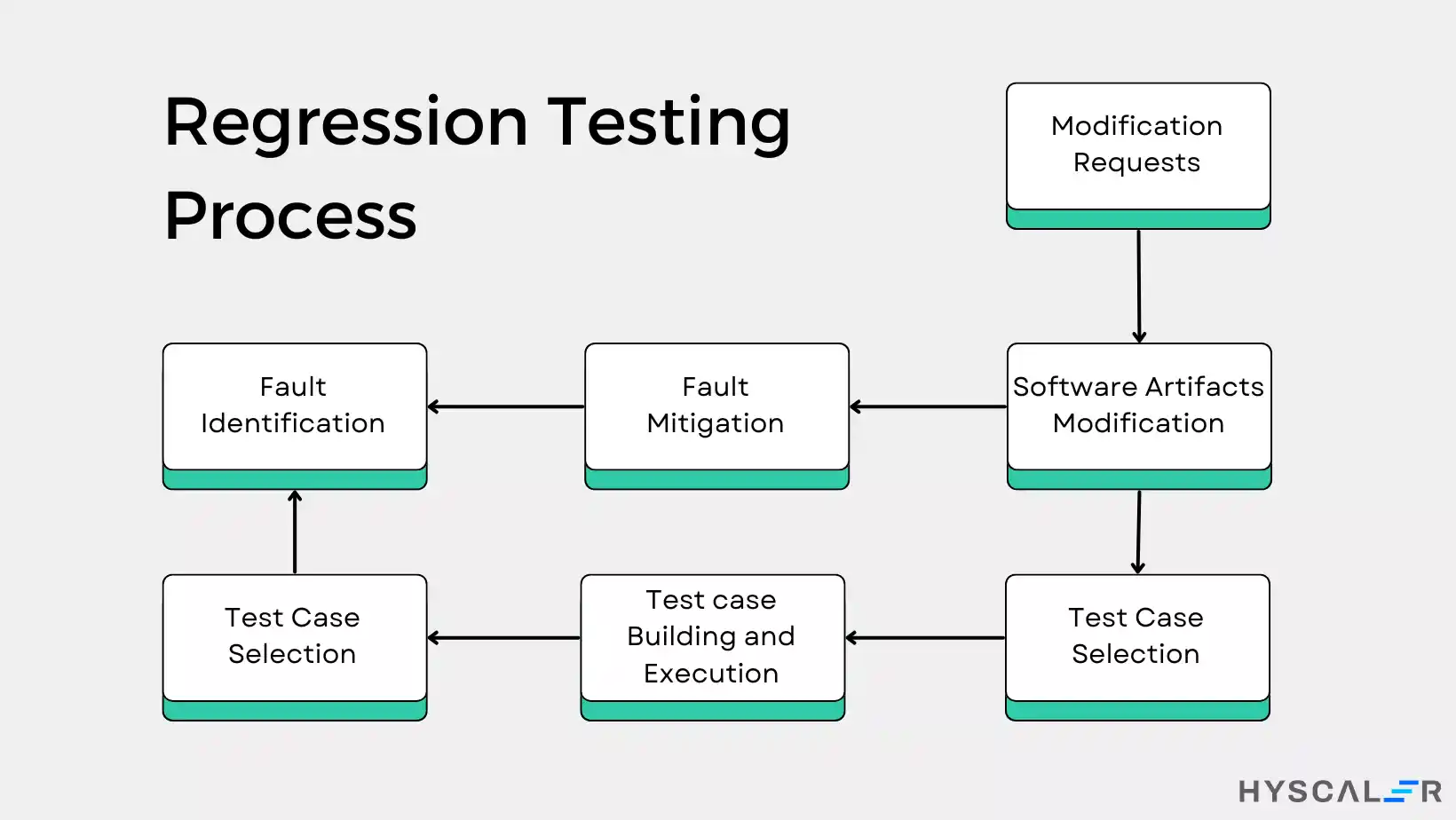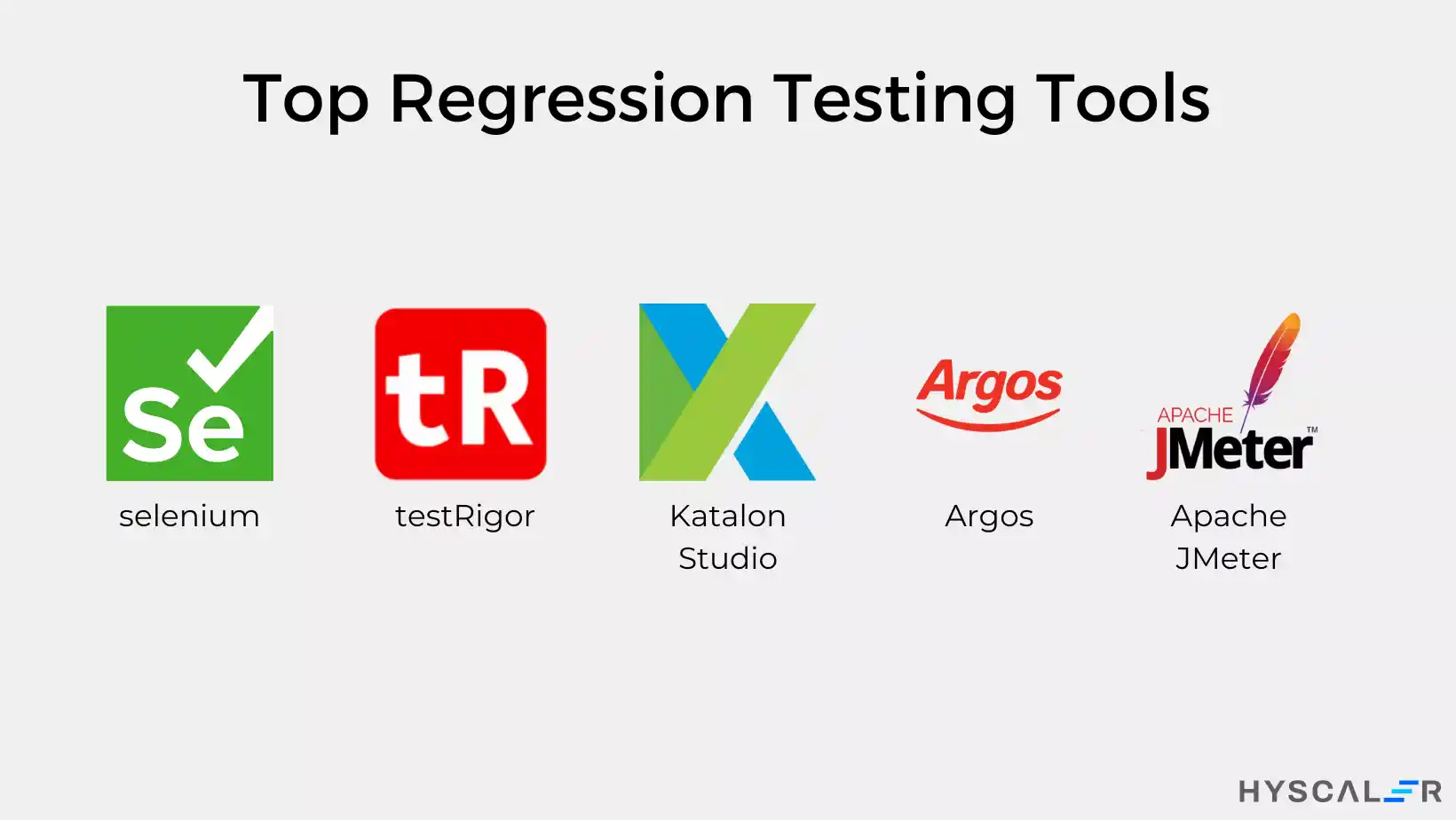Table of Contents
In the dynamic world of software development, ensuring that new code changes do not disrupt existing functionalities is crucial. This is where regression testing comes into play. As we step into 2024, the significance of having reliable regression testing tools has become more pronounced. This comprehensive guide explores the best regression testing tools available this year, detailing their features, benefits, and how they can enhance your software engineering practices.
What is Regression Testing?
Regression testing is a fundamental process in software engineering aimed at verifying that new code changes have not negatively impacted existing functionality. This type of testing involves re-running functional and non-functional tests to ensure that previously developed and tested software continues to perform correctly after changes. The main goal is to detect any defects or issues introduced by the recent code modifications, ensuring the overall stability and reliability of the software.
Example of Regression Testing in Software Engineering
Consider an e-commerce application that adds a new “One-Click Purchase” feature. Regression testing in this scenario would involve verifying that existing features such as product search, cart management, checkout processes, and user account management remain unaffected by this new addition. This ensures that the new feature integrates seamlessly without introducing new bugs or breaking existing functionalities.
Types of Regression Testing
Corrective Regression Testing
Corrective regression testing is conducted when no changes have been made to the product’s specifications. This type of testing ensures that the existing functionalities are not affected by any changes in the code.
Retest-All Regression Testing
Retest-all regression testing involves verifying all system specifications from scratch. This type of testing reviews every minor change the software has experienced to ensure comprehensive coverage.
Selective Regression Testing
Selective regression testing identifies how the code behaves when new code is added to the existing codebase. It utilizes a subset of current test cases to lower the effort and cost needed for retesting.
Progressive Regression Testing
Progressive regression testing is used when specific modifications are made to the program, and new test cases are developed. This type of testing ensures that changes do not affect existing functionalities.
Complete Regression Testing
Complete regression testing is conducted when numerous updates have been performed on the existing code. It ensures that these updates do not introduce any new issues or defects.
Partial Regression Testing
Partial regression testing validates that new code additions do not disrupt existing code functionality. It ensures that the system functions as expected after the new code is integrated.
Unit Regression Testing
Unit regression testing focuses on individual code units without any dependencies. It is conducted in isolation to ensure that the code units work correctly.
When to Perform Regression Testing?
Regression testing is typically performed in various scenarios, including:
- Adding New Functionality: When new features are integrated into the software.
- Code Changes: When there are modifications or updates to the existing code.
- Bug Fixes: After fixing defects to ensure no new issues are introduced.
- Performance Improvements: When performance-related changes are made.
- Environment Changes: When there is a change in the software’s operating environment.
Process of Regression Testing

The regression testing process involves several steps:
- Source Code Changes: Changes made to the source code may cause test failures.
- Debugging: Identify and debug any existing bugs in the code.
- Modification: Make appropriate modifications to fix identified bugs.
- Test Case Selection: Select relevant test cases covering modified and affected parts of the code.
- Execution: Execute the selected test cases to verify that the software works as expected post-modification.
5 Best Regression Testing Tools

Here is the list of top Regression Testing Tools to look into :
1. Selenium
Selenium is a widely recognized open-source regression testing tool framework for automating tests on web browsers. It supports regression testing for web-based applications and offers numerous features:
- Open Source: Freely available for developers and testers.
- Browser Compatibility: Supports multiple browsers like Chrome, Firefox, Safari, and Edge.
- Programming Language Support: Allows writing tests in Java, Python, C#, Ruby, and JavaScript.
- Cross-Platform: Runs on various operating systems, including Windows, macOS, and Linux.
- Integration Capabilities: Integrates well with tools like Jenkins for CI/CD, enhancing automated regression testing in development pipelines.
- Web Application Testing: Primarily designed for automating web applications.
- Extensive Community Support: Boasts a large and active community offering a wealth of resources, plugins, and extensions to aid in test automation.
2. testRigor
testRigor is an AI-based regression testing tool that simplifies the creation of automated tests. Key features include:
- AI Automation: Converts manual tests into automated ones using plain English.
- Efficiency: Reduces test maintenance time by 95%.
- Cost: Starts at $300 per month, with a 14-day free trial available.
- High-Level Dashboard: Manage test cases from a centralized dashboard.
- Human Perspective Testing: Elements are referenced from a human perspective, making tests more intuitive.
3. Katalon Studio
Katalon Studio is an all-in-one test automation solution. Key features include:
- Programming Languages: Supports Groovy and Java.
- Integrations: Compatible with Git, Jenkins, and JIRA.
- Platforms: Supports various browsers and devices.
- CI/CD Integration: Easily integrates into CI/CD pipelines.
- Cost: Starts at $69 per user per month, with a free version and a 30-day trial available.
- Built-In Features: Offers Object Spy, Debugging, UI Test Artifact Sharing, Retry Failed Tests, Smart Wait, Self-Healing, and analytics for test reporting.
4. Argos
Argos focuses on visual regression testing tools. Key features include:
- Visual Testing: Identifies and prevents UI issues.
- Integration: Seamlessly integrates with CI/CD pipelines.
- Cross-Browser Testing: Ensures consistency across different browsers.
- Cost: Free plan available, with premium plans starting at $30 per month.
- Advanced Features: Includes smart baseline detection, monitoring, rapid processing, natural keyboard navigation, and support for open-source collaboration.
5. Apache JMeter
Apache JMeter is an open-source regression testing tool primarily used for performance testing but also supports regression testing. Key features include:
- Platform Support: Runs on Linux, Windows, and Mac.
- Open Source: Freely available and highly customizable.
- Usage: Suitable for performance, load, stress, and functional testing of web applications.
- Scalability: Can simulate a heavy load on a server to test its strength and analyze overall performance under different load types.
Best Practices in Regression Testing
- Develop a Regression Testing Strategy: Define a testing strategy based on the risk analysis of the software application.
- Include Various Types of Tests: Incorporate functional, unit, and manual tests into the regression test suite.
- Run Tests Regularly: Execute the regression test suite regularly, preferably after every new change or release.
- Prioritize Test Cases: Prioritize test cases based on their importance and impact.
- Automate Regression Testing: Use automated tools to reduce time and effort.
- Keep the Test Suite Updated: Regularly update the regression test suite to reflect software changes.
- Collaborate with Developers: Ensure the regression testing tools align with the software development process.
- Document the Process: Maintain documentation of the testing process, including regression testing tools to use, test cases, and frequency.
- Track and Report Bugs: Track and report any bugs found during testing.
- Continuously Improve the Process: Analyze results and make adjustments to improve the testing process.
Develop a Regression Testing Strategy
Developing a comprehensive regression testing strategy involves selecting the most critical test cases and determining the frequency of testing. This strategy should be based on a thorough risk analysis of the software application and should be regularly updated to reflect changes in the software.
Include Various Types of Tests
A well-rounded regression test suite should include tests from different types of testing, such as functional tests, unit tests, and manual tests. This ensures that all aspects of the software are covered during the testing process.
Run Tests Regularly
To catch new issues early, it is essential to run the regression test suite regularly. Ideally, tests should be executed after every new change or release to ensure that any new problems are identified and resolved promptly.
Prioritize Test Cases
Not all test cases are equally important. Prioritize test cases based on their importance and impact on the application. This ensures that the most critical functions are always tested first.
Use Automated Regression Testing
Automated regression testing can significantly reduce the time and effort required for testing. Automated Regression tools help increase test coverage and improve the accuracy of tests by eliminating human error.
Keep the Test Suite Updated
As the software evolves, so should the regression test suite. Regularly update the test suite to include new test cases and remove outdated ones. This ensures that the test suite remains relevant and effective.
Collaborate with Developers
Effective collaboration between testers and developers is crucial for successful regression testing. Ensure that the regression test suite aligns with the development process and that developers are aware of any issues found during testing.
Document the Process
Maintain thorough documentation of the regression testing process, including details of test cases, the frequency of testing, and any issues found. This documentation helps improve the process over time and ensures consistency.
Track and Report Bugs
Track and report any bugs found during regression testing. This helps developers prioritize their work and ensures that all issues are resolved before the software is released.
Continuously Improve the Process
Regularly analyze the results of regression testing and make adjustments to improve the process. This continuous improvement helps maintain high-quality software and reduces the risk of future issues.
Conclusion
In 2024, the importance of regression testing tools in maintaining the stability and reliability of software cannot be overstated. Tools like Selenium, testRigor, Katalon Studio, Argos, and Apache JMeter offer diverse functionalities that cater to different testing needs. By implementing best practices in regression testing, organizations can ensure their software remains robust and functional, delivering consistent performance and user satisfaction.
FAQs
Which tool is used for regression testing?
Popular regression testing tools include Selenium, testRigor, Katalon Studio, Argos, and Apache JMeter.
Can TestNG be used for regression testing?
Yes, TestNG is often used for regression testing in combination with Selenium.
What is a software regression?
A software regression is a defect that occurs when a previously functioning feature stops working after a change or update.
What is a good example of regression testing?
A good example of regression testing is verifying that existing features of an e-commerce application, such as adding items to the cart and processing payments, remain functional after adding a new feature.
How many types of regression testing are there?
There are several types of regression testing, including corrective, retest-all, selective, progressive, complete, partial, and unit regression testing.





